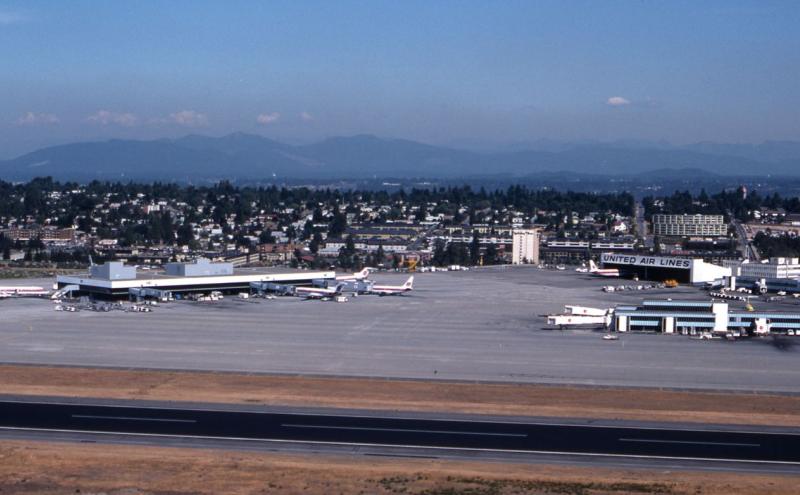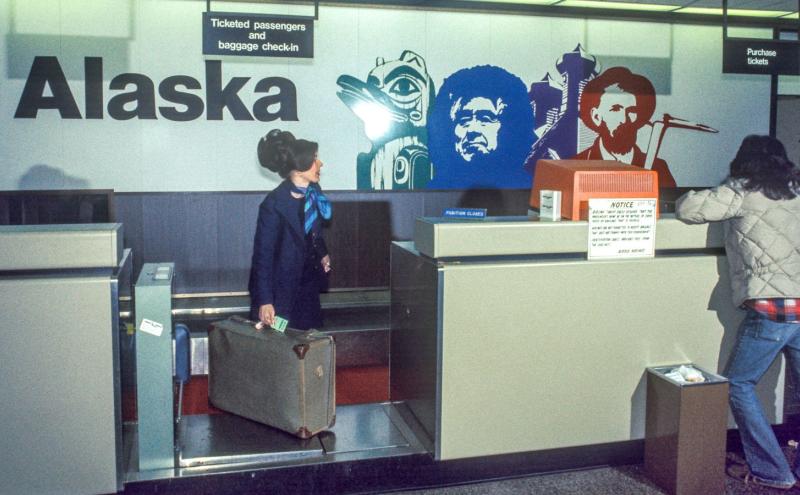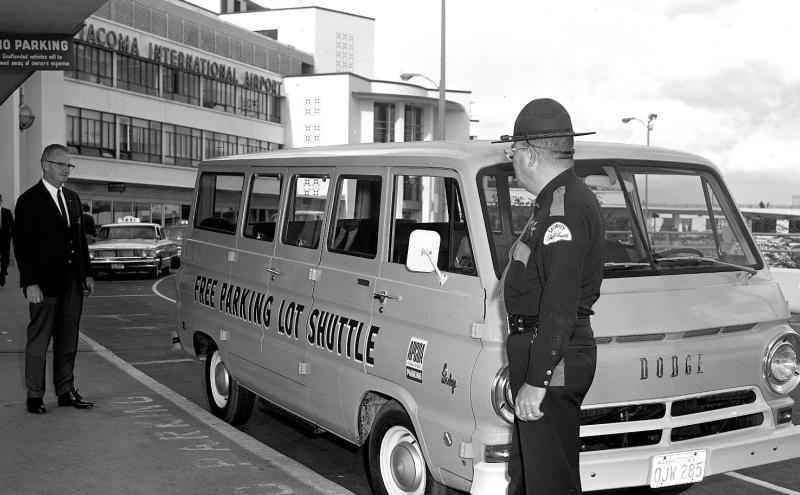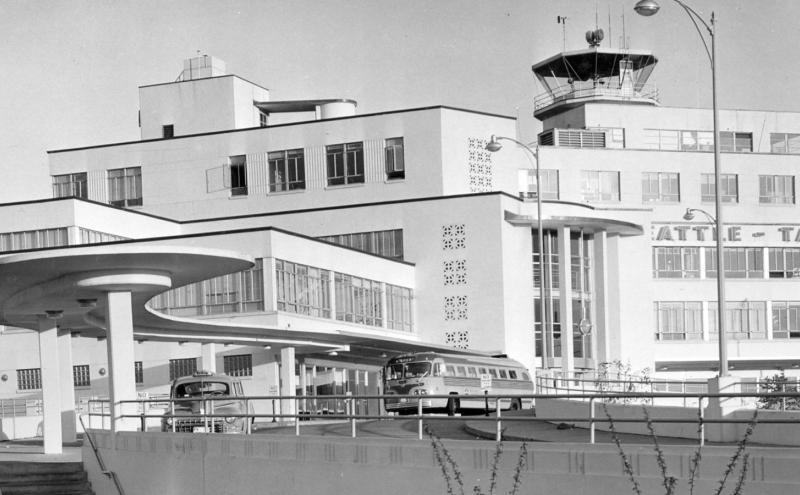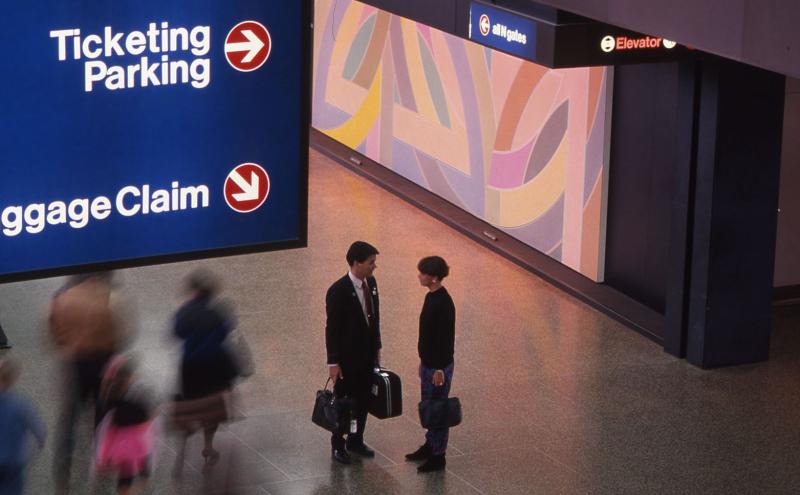
Our region saw growth and expansion, with new advancements to protect the environment, keep passengers safe, and boost the local economy.
1990
- Seattle-Tacoma International Airport (SEA) ranked first worldwide in volume of sea to air cargo
- The City of SeaTac was incorporated on February 28, 1990
- SEA became the first airport to receive Federal Aviation Authority (FAA) approval for low-visibility flights
Pearl Jam
The band Pearl Jam was formed in Seattle in 1990. The band, inducted into the Rock and Roll Hall of Fame, has sold over 85 million albums worldwide. After more than 30 years of live performance, 12 studio albums, and hundreds of official live concert bootleg releases, the band continues to be critically acclaimed and commercially successful.
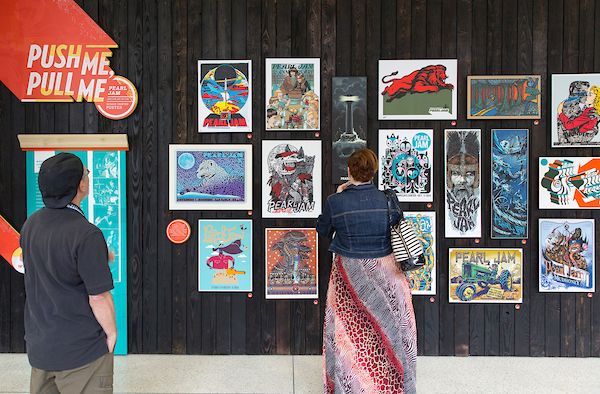
In the 1990s, posters were one of the few ways that a band could communicate with its audience. They were vital to advertising a future show, but also important for conveying, through the poster artwork and layout, subtle information about the identity of the band. Soon after the Grunge explosion in the early 1990's, as screen printing technology was being re-embraced for artistic purposes, Pearl Jam began commissioning posters for each show on its tours. In the ensuing two decades, over 500 posters by 100+ artists have been created. These posters are reflections of the artists that created them, but they are also formed through the lens of the band. References to the members of Pearl Jam, song lyrics, music, history, popular culture — all of these elements are evident in these posters and have become an extension of the band. In addition, the posters illustrate one of the band’s core values — the ability to foster a climate of creation, act as a patron for other artists, and to comment on our society.
-
Find the Pearl Jam posters at SEA before security between Checkpoints 2 and 3
1992
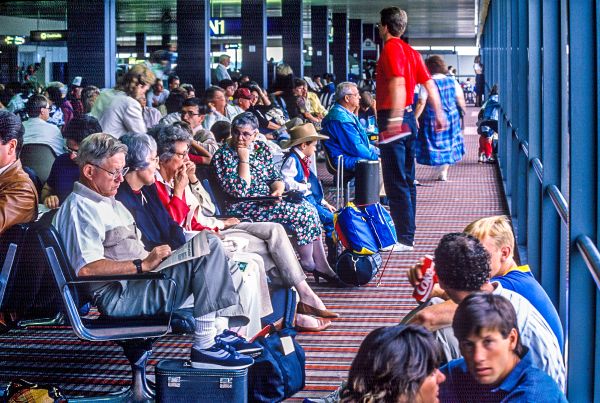
SEA served nearly 18 million travelers. Having spent $40 million in 1985 to upgrade the airport with new gates, the Port completed a more ambitious $167 million program of improvements in 1992, the "First Class Upgrade" program of terminal, concourse, garage, and other airport improvements. With additional federal funding, the Port also installed new ground-control radar and lighting to dramatically increase the capacity and safety of the runways and taxiways during low-visibility conditions, which prevail more than 40% in an average year.
- 3,500 parking spaces were added to the parking garage
- New surface detection radar and lighting was installed to increase capacity and safety of runways
Third runway assessment
In its Draft Report and its detailed Environmental Impact Statement (EIS), both published on January 7, 1992, the Puget Sound Air Transportation Committee (PSATC) concluded that the region’s future air service needs could be met best by the addition of a third runway at SEA, commercial airline use of Paine Field, and pursuit of existing or new sites for a future "supplemental" airport in Pierce or Thurston Counties.
On June 17, 1992, after several public hearings, PSATC voted 29 to 6 to approve its final report without major changes, and dissolved. The PSRC published the final Flight Plan EIS on October 6.
On November 3, 1992, the Port of Seattle Commission unanimously approved Resolution 3125, which authorized a "Master Plan Update" for the airport and preparation of a new Environmental Impact Statement for its expansion. (Source: HistoryLink)
1993
Puget Sound Regional Council (PSRC) supports the third runway
On April 29, 1993, an 89% majority of the Puget Sound Regional Council’s General Assembly voted to adopt resolution A-93-03, which affirmed "that the region should vigorously pursue, as the preferred alternative, a major supplemental airport and a third runway at Sea-Tac" subject to PSRC’s final approval by April 1, 1996. (Source: HistoryLink)
Recycle and reuse
In the 1990s, waste from planes and the airport went into a massive dumpster at SEA Airport. That didn’t sit well with Mark Reis, the airport’s managing director. The airport’s first recycling program started in 1993 and kept one third of all airport trash out of the landfill. The message to the airlines was “recycling was free and dumping garbage would cost you money.”
The SEA Airport recycling program has expanded considerably since those early days.
Sleepless in Seattle
SEA is prominent in pop culture this year. Gate N7 is where Annie (Meg Ryan) walks right past Sam (Tom Hanks) in the 1993 movie Sleepless in Seattle.
1997
Third runway approved
The Federal Aviation Administration (FAA) granted final approval in July 1997 for the third runway at Seattle-Tacoma International Airport. The project was funded by federal aid, the airlines, and fees, rather than taxpayers. (Source: HistoryLink)

